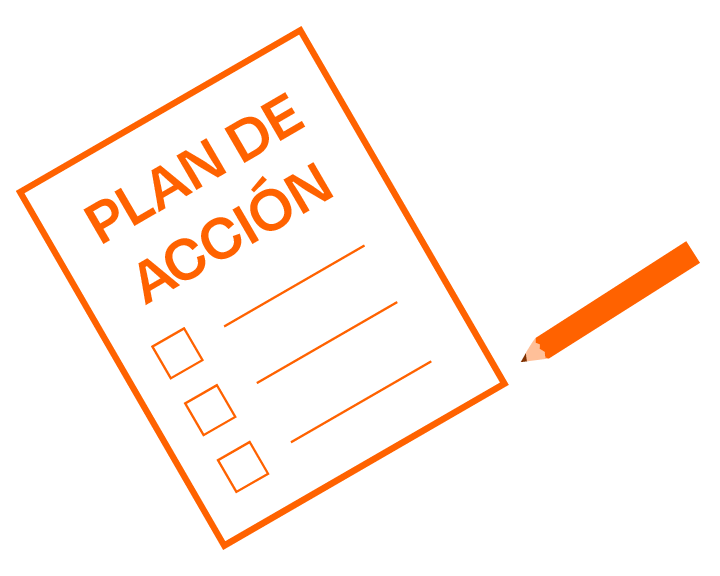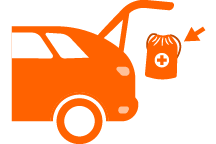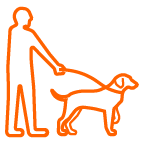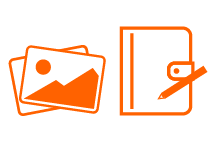COMMUNITY
Now that you have done everything you can to protect your home, it’s time to prepare your family. Your Wildfire Action Plan must be prepared with all members of your household well in advance of a wildfire. Each family’s plan will be different, depending on their situation. Once you finish your plan, practice it regularly with your family, and post it in a safe and accessible place for quick implementation. CALFIRE includes information about how to create a Wildfire Action Plan in its “Ready, Set, Go!” program.
Property owners and residents in areas most at risk are encouraged to take the steps in CAL FIRE “Ready, Set, Go!” to be ready for wildfire.
READY, SET, GO!
The geography, weather patterns and number of Wildland Urban Interface communities in California make it a state particularly threatened by devastating wildfire. As catastrophic wildfires continue to increase each year in California, make sure to protect yourself and your family – plan, prepare and stay aware. Property owners and residents in areas most at risk are encouraged to take the steps in CAL FIRE “Ready, Set, Go!” to be ready for wildfire.
Get prepared for wildfire before it strikes by following Ready, Set, Go!
- Be Ready: Create and maintain defensible space and harden your home against flying embers.
- Get Set: Prepare your family and home ahead of time for the possibility of having to evacuate. Ensure you have a plan of what to take and where to go – evacuation plans will be different this year due to COVID-19.
Ask friends or relatives outside your area if you would be able to stay with them, should the need arise. Also get set by learning about your community’s response plan for each disaster and determine if these plans have been adapted because of COVID-19.
- Be Ready to GO!: When wildfire strikes, go early for your safety. Take the evacuation steps necessary to give your family and home the best chance of surviving a wildfire.
Create Your Wildfire Action Plan
Your Wildfire Action Plan must be prepared and familiar to all members of your household well in advance of a wildfire. Use the checklist below to help create your plan. Each family’s plan will be different, depending on a variety of issues, needs and situations.
Ensure you plan with COVID-19 in mind. Ask friends or relatives outside your area if you would be able to stay with them, should the need arise. If you do need to evacuate and plan to stay with friends or relatives, ask first if they have symptoms of COVID-19 or have people in their home at higher risk for serious illness. If that is the case, make other arrangements. Check with hotels, motels and campgrounds to learn if they are open. Also get set by learning about your community’s response plan for each disaster and determine if these plans have been adapted because of COVID-19.


Create an evacuation plan that includes:
 |
A designated emergency meeting location outside the fire or hazard area. This is critical to determine who has safely evacuated from the affected area. |
|
 |
Several different escape routes from your home and community. Practice these often so everyone in your family is familiar in case of emergency. |
|
 |
Have an evacuation plan for pets and large animals such as horses and other livestock. |
|
 # # |
A Family Communication Plan that designates an out-of-area friend or relative as a point of contact to act as a single source of communication among family members in case of separation. (It is easier to call or message one person and let them contact others than to try and call everyone when phone, cell, and internet systems can be overloaded or limited during a disaster.) |
Be Prepared:
 |
Have fire extinguishers on hand and train your family how to use them (check expiration dates regularly) |
|
 |
Ensure that your family knows where your gas, electric, and water main shut-off controls are located and how to safely shut them down in an emergency. |
|
 |
Assemble an Emergency Supply Kit for each person, as recommended by the American Red Cross. (See next section for details.) |
|
 |
Maintain a list of emergency contact numbers posted near your phone and in your emergency supply kit. |
|
 |
Keep an extra Emergency Supply Kit in your car in case you cannot get to your home because of fire or other emergency. |
|
 |
Have a portable radio or scanner so you can stay updated on the fire. |
|
 |
Tell your neighbors about Ready, Set, Go! and your Wildfire Action Plan. |
6 P’s: Keep These 6 P’s Ready In Case Immediate Evacuation Is Required:
 |
People and Pets |
|
 |
Papers, Phone numbers, and important documents |
|
 |
Prescriptions, vitamins, and eyeglasses |
|
 |
Pictures, and irreplaceable memorablilia |
|
 |
Personal computer hard drive and disks |
|
 |
Plastic (e.g., credit cards, ATM cards) and cash |
Sources:
CAL FIRE – Ready, Set, Go!
CAL FIRE – Create a Wildfire Action Plan
California Fire Safe Council – Community Wildfire Fire Protection Plans
City of Los Angeles – Ready Your LA Neighborhood (RYLAN)
Los Angeles County Fire Department – Ready! Set! Go!
North Topanga Canyon Fire Safe Council – Preparedness Guides
Ventura County Fire Department – Ready! Set! Go!
Topanga Coalition for Emergency Preparedness – Topanga Disaster Survival Guide
University of California, Department of Agricultural and Natural Resources – Community Action & Involvement
Washington Emergency Management Division – Map Your Neighborhood


